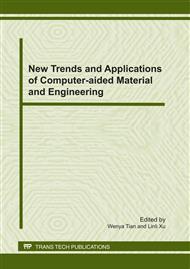p.236
p.241
p.246
p.251
p.256
p.261
p.266
p.271
p.277
The Definition and Implementation of Flexible Architecture for Enterprise Application
Abstract:
In order to fully reuse existing resources and meet the changing demands, a flexible architecture for enterprise application is proposed in this paper, which is composed of logic interpret engine, data provider and component. Logic interpret engine is used to interpret the instructions received from user interface. Data provider is responsible for pulling data from different devices and providing data for logic interpret engine by uniform interface. Components are charged for the rendering of user interface. Practical results show that the architecture can be quickly applied to different demands.
Info:
Periodical:
Pages:
256-260
Citation:
Online since:
January 2011
Authors:
Keywords:
Price:
Сopyright:
© 2011 Trans Tech Publications Ltd. All Rights Reserved
Share:
Citation:


